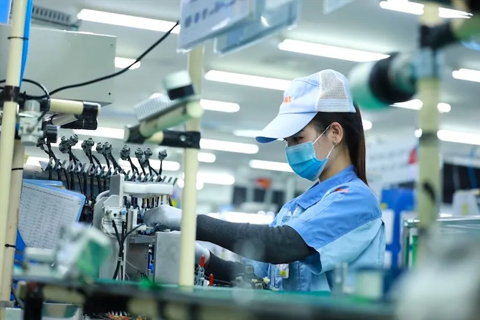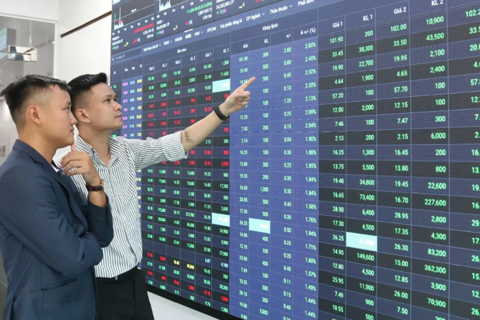EVFTA remains untapped for Vietnamese businesses
Vietnam's exports to the EU accounted for only 2% of the bloc's total imports of US$2.5 billion annually.
The impressive bilateral trade results from two years since the implementation of the EU – Vietnam Free Trade Agreement (EVFTA) could not conceal the fact that the deal is untapped potential for local businesses.
| Garment production for export at Son Tay Garment Company. Photo Le Nam/The Hanoi Times |
The view was shared among experts at the conference held by the Ministry of Industry and Trade (MoIT) on December 27, discussing the EVFTA’s performance since it came into force two years ago.
Data from the MoIT revealed during the first year of implementation in 2020, bilateral trade turnover rose by 12.1% year on year to US$54.9 billion, in which Vietnam’s exports to the EU rose by 11.3% to $34.5 billion.
Despite severe Covid-19 impacts, the turnover rose to $61.4 billion in 2021, or an increase of 11.9%, and $57 billion during the first 11 months of 2022, up 14%. Of the total, the export revenue from Vietnam to the EU hit $43.5 billion, rising 21%.
Vietnam’s export staples to the European bloc continued to recover and expand at a steady rate, including garment (24%), footwear (19%), and seafood (41%).
"The country's exports to the EU have undergone a positive change, according to which not only the bloc's large markets, such as Germany, the Netherlands or France but also the niches of Western, Eastern and Southern Europe are promoted," Deputy Minister of Industry and Trade Tran Quoc Khanh told the conference.
“Such positive figures show local businesses have been taking advantage of opportunities from the EVFTA,” Khanh noted, adding 40% of Vietnamese firms are enjoying a preferential treatment from the deal.
“The trade relations between Vietnam and the EU are complementary instead of direct competition, so the potential remains huge,” he suggested.
Director of the Export Department at Loc Troi Company Nguyen Van Hieu added the EVFTA is opening the door for the company to increase rice exports to the EU market. In 2018, Loc Troi exported a modest amount of 2,000 tons of rice to the EU, but the figure jumped to 11,000 tons in 2020 when the EVFTA kicked in, and an estimated 21,000 tons by late 2022.
Challenges remain
Experts said despite the rising trade turnover, Vietnam’s exports to the EU only accounted for 2% of the bloc’s total imports of $2.5 trillion per year.
Deputy Director of the Multilateral Trade Policy Department under the MoIT Ngo Chung Khanh said Vietnam’s strategic export products, including seafood, vegetable, and garments, to the EU market made up 2-4% of the market share, so the potential remains huge.
“While a handful of local firms have secured a solid foothold in the European market, the majority are still struggling to find a way in, due to their inability to meet EU’s high standards or rules of origin for export products,” Khanh added.
On this issue, Director of the WTO and Integration Center Nguyen Thi Thu Trang said two years on since the implementation of the EVFTA, Vietnamese brands remain unheard of in many European countries.
"This means that the benefit to local businesses has not been commensurate with their potential," Trang said.
She called on local businesses to focus on brand positioning in the European market, adding they should be active to study market information and preferences to avoid trade-related risks. Vietnamese exporters should change their mindset of doing business by getting out of their comfort zone and looking for new markets.
In this regard, Trang called for the MoIT to help local firms in trade promotion activities and raise awareness of technical trade barriers, and food safety requirements of the import markets.
Khanh from the MoIT noted in the coming time there would be more incentive policies for businesses to form value chains and get better chances of penetrating demanding markets. In addition, the Government would set up an FTA Index to assess the performance of local provinces/cities in utilizing free trade agreements.
“From that basis, the authorities could provide effective support for businesses to maximize the benefits from the EVFTA,” he concluded.

.jpeg)










